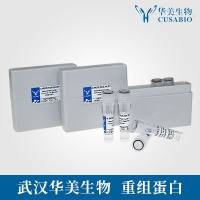Extraction of Nuclear Proteins
互联网
694
The integrity of a subcellular proteome such as the nucleus, is largely dependent on purification of the isolated compartment away from other cellular contaminants. The separation of high-purity nuclei from plants is a difficult task. However, successful purification has been achieved through a series of fractionation processes. Initially, centrifugation in a 2.0 M sucrose density gradient (1 ) or a percoll density gradient (2 ) was used to isolate nuclei from cultured rice suspension cells. A modified version of the sucrose gradient method described in Morre and Anderson (1 ) has proved to be more rapid and efficient for the isolation of nuclei from cultured rice suspension cells. The nuclei are uniform spheres with an average diameter of approx 20 �m. The nuclear proteins were prepared from the purified nuclei using lysis buffer (3 ) or SDS sample buffer (4 ). The purity of the isolated nuclear fraction was evaluated by Western blot analysis using antihistone H1 antibody, a specific antibody for nuclear proteins. Histone H1 was found in the nuclear fraction, but not in the supernatant fraction, suggesting that the preparation is enriched in nuclear proteins.








